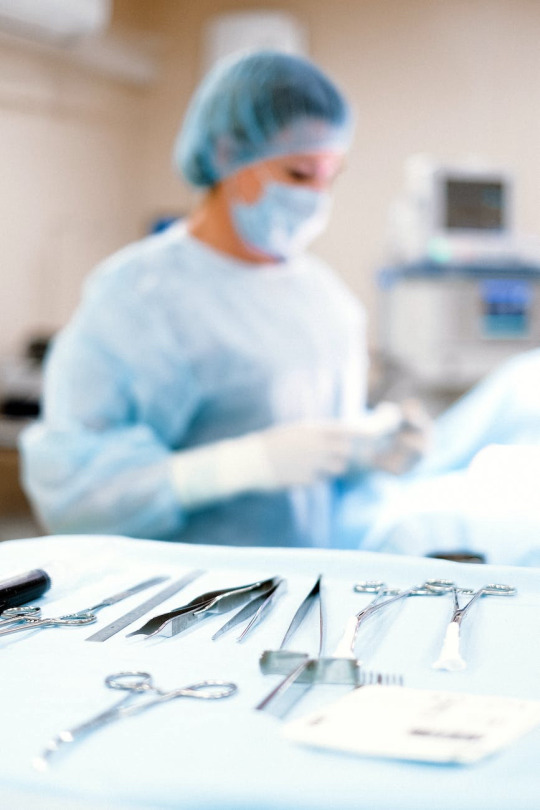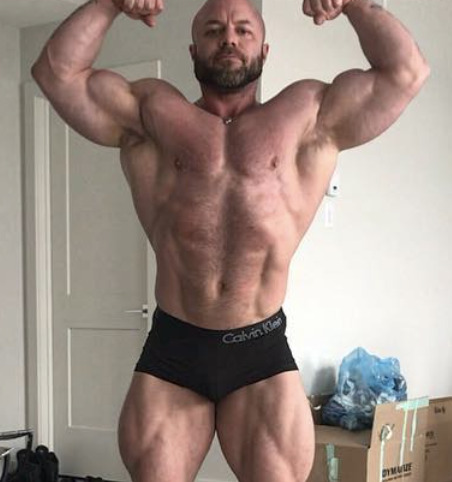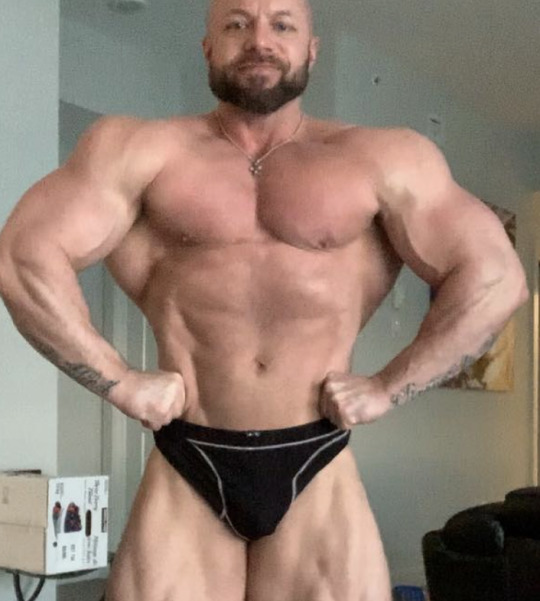#cardiac ablation
Explore tagged Tumblr posts
Text
Random post but when i had cardiac surgery i had this little heart monitor with me at all times, even during surgery itself and the nurses said i should name it as it would always be with me.
Slight tw for picture!!

Meet wilson guys
#house md#james wilson#cardiac surgery#cardiachealth#svt#supraventricular tachycardia#heart condition#ehhe#surgery#cardiac ablation
29 notes
·
View notes
Text
Last week I found this card my sister made me while cleaning out my closet

Which is relevant because today's the 11th? 12th? (I don't remember which year it happened actually) anniversary of me undergoing a small heart procedure. Doing so has allowed me to stay up late, drink caffeine, stress out, and generally exert myself without fainting. Although I am grateful that this condition gave me the chance to compare and contrast different ERs (best was University College Hospital in London, worst was George Washington University Hospital in DC), life's been a million times better since then. I think if I hadn't gotten a second opinion and kept living with my funky node problem, I would have spent most of 2020 unconscious.
Shout out to the nurse who assured me beforehand: Don't worry, we're going to numb you. In your groin. It's going to feel like a lot of bee stings.
Me: Huh. That's exactly where I've never wanted to feel a lot of bee stings.
#hospital mention#modern medicine#real life#heart problems#avnrt#cardiac ablation#also i sometimes miss how the adenosine injections would slow/stop my heart and then make everything feel cold inside#arctic monkeys phase
0 notes
Text
#Cardiac Ablation#Minimally Invasive Surgery#Heart Health#Arrhythmia Treatment#Electrophysiology#Heart Rhythm#heart rhythm disorders#Cardiology#Heart Disease#Heart Care
1 note
·
View note
Text
Cardiac ablation is the most effective treatment for arrhythmias.
Cardiac arrhythmias, also called arrhythmias, are problems for patients and can be life-threatening in some cases. Arrhythmias cause problems for several hundred thousand people in Poland. Arrhythmias can be treated in a number of ways, but ablation is the most effective. What is ablation, who can get it, and what are the reasons it shouldn’t be done? What is ablation, and what is the…
View On WordPress
0 notes
Text
I had SVT, ended up having an ablation. Things that triggered it included but we’re not limited to:
Standing up too fast
Bending down too fast
The pressure of pool water around my chest
Playing the viola (deep notes that vibrates in my chest were the worst)
Coughing
Opening a door
Beta blocker didn’t help me, so ablation was the next step.
I ATE TOO MANY POTATO AGAIN
#svt#supraventricular tachycardia#cardiac ablation#my father was an electrical engineer#my mother found it hilarious he couldn’t get his own kid’s wiring right
1K notes
·
View notes
Text
Pulsed Field Ablation: The Next Big Thing In Medical Device Technology

Advancements in medical device technology are helping doctors treat conditions in less invasive ways. One such innovation is pulsed field ablation (PFA), a new method for treating cardiac arrhythmias without the need for open-heart surgery. This cutting-edge technique uses pulsed electric fields to safely create precise non-thermal lesions in the heart muscle.
How Does PFA Work?
Pulsed Field Ablation works by delivering high-intensity electric pulses to targeted cardiac tissue through electrodes. These nanosecond pulses are able to penetrate cell membranes without causing irreversible electroporation, thereby ablating the tissue in a non-thermal manner. The electric fields disrupt cell membranes only in the immediate vicinity of the electrodes, allowing for creation of very precise and controlled lesions without affecting surrounding healthy tissues.
This is a major advantage over older ablation techniques that rely on temperatures to ablate. With PFA, there is no thermal energy transfer so the risk of collateral damage is minimized. Researchers have demonstrated in animal studies that PFA can accurately target and treat arrhythmias with precise ablation lesions and no perforation of cardiac chambers.
Potential For Treating Complex Arrhythmias
Pulsed field ablation shows great potential for treating complex arrhythmias that have been difficult to manage using existing techniques. Its ability to create tailored, millimeter-sized lesions could help treat conditions like atrial fibrillation originating from multiple focal points in the heart muscle. Precisely targeting these areas is challenging with temperature-based radiofrequency ablation.
PFA may also help defeat arrhythmias located near arteries, veins or conducting tissues where thermal energy risks unintended coagulation or vessel damage. The elimination of thermal effects makes it safer for treating arrhythmias very close to the esophagus as well. Its non-thermal mechanism could expand treatment eligibility for elderly patients or those with comorbidities precluding the heat effects of older ablation technologies.
Clinical Trial Results Are Promising
Several medical technology companies are developing PFA systems and have initiated early human trials. Results so far have been very encouraging. In a 30-patient study of PFA for atrial fibrillation, symptoms were successfully eliminated in over 90% of participants with no serious adverse events. Follow-up showed the majority remained arrhythmia-free over a year later.
Another trial on 25 patients with recurrent ventricular tachycardia or ventricular fibrillation after heart attack also demonstrated strong efficacy and safety. Over 80% of participants saw complete resolution of their arrhythmia episodes post-ablation. Key investigators noted the consistent, homogenous lesions achieved with PFA were larger than anticipated and resulted in fewer treatment touches compared to standard radiofrequency ablation.
Regulatory Approval And Commercialization Plans
Given these positive results, manufacturers are working to seek regulatory clearances from the FDA and CE Mark approval in Europe over the next 1-2 years to commercially launch PFA systems. With approval, PFA could start replacing radiofrequency as the primary approach for most catheter ablations by 2025 according to analysts. Billing codes are also being established to ensure insurance coverage.
This innovation could be highly transformative for the multi-billion dollar cardiac ablation device if large clinical trials confirm its advantages over legacy technologies. Hospitals stand to benefit from shorter procedure times, reduced complication risks and ability to treat more complex cases. For patients, PFA promises less invasive and more effective treatment of cardiac arrhythmias without the side effects of temperature-based ablation. Its arrival could help address the growing epidemic of atrial fibrillation worldwide.
Pulsed field ablation is an exciting new method for cardiac ablation that overcomes many limitations of existing temperature-based techniques. Early human data validates its superior safety profile and ability to precisely target arrhythmias. Regulatory clearances in the next two years should enable the commercial launch of PFA systems. This technology could revolutionize the field of electrophysiology and meet a major unmet need in arrhythmia care. Pending larger clinical outcomes, PFA appears well poised to become the new gold standard for catheter ablation procedures.
Get more insights on this topic: https://medium.com/@colinwilson306/pulsed-field-ablation-a-revolutionary-new-laser-technology-70d0e4e03b19
About Author:
Ravina Pandya, Content Writer, has a strong foothold in the market research industry. She specializes in writing well-researched articles from different industries, including food and beverages, information and technology, healthcare, chemical and materials, etc. (https://www.linkedin.com/in/ravina-pandya-1a3984191)
*Note: 1. Source: Coherent Market Insights, Public sources, Desk research 2. We have leveraged AI tools to mine information and compile it
#Pulsed Field Ablation#Electroporation in Cardiology#Cardiac Ablation Therapy#Non-thermal Ablation Technology#Cardiac Electrophysiology Innovation
0 notes
Text
https://social.studentb.eu/read-blog/186542_cardiac-ablation-technologies-market-share-overview-competitive-analysis-and-for.html
The Cardiac Ablation Technologies Market in 2023 is US$ 5.47 billion, and is expected to reach US$ 12.99 billion by 2031 at a CAGR of 11.40%.
#Cardiac Ablation Technologies Market#Cardiac Ablation Technologies Market Size#Cardiac Ablation Technologies Market Share
0 notes
Text
The Global Cardiac Ablation Devices Market is projected to grow at a CAGR of around 16.53% during the forecast period, i.e., 2022-27. The global market has experienced significant growth during 2017-19, owing to the mushrooming elderly population across North America, Europe, China, and Japan. According to WHO, people aged 60 & above are projected to be over 1.4 billion by 2030.
#Global Cardiac Ablation Devices Market#Global Cardiac Ablation Devices Market News#Global Cardiac Ablation Devices Market Growth#Global Cardiac Ablation Devices Market Size#Global Cardiac Ablation Devices Market news#Global Cardiac Ablation Devices Market trends
0 notes
Text
5 Things to Know Before an Ablation Procedure
5 Things to Know Before an Ablation Procedure
Embarking on the journey of an ablation procedure for atrial fibrillation requires careful consideration and preparation. This introduction serves as a compass, guiding you through essential aspects to know before undergoing this heart procedure. From understanding the intricacies of the ablation process to following pre-procedure guidelines and planning for post-procedure care, these insights…

View On WordPress
#Ablation Procedure#AHA#Atrial Fibrillation#Cardiac Care#Cardiology Insights#Cleveland Clinic#Health Education#Health Guidance#Health Resources#Heart Awareness#heart health#Heart Rhythm#Heart Wellness#HRS#mayo clinic#Medical Insights#MedlinePlus#Patient Awareness#Post-Procedure Care#Procedure Preparation#Wellbeing Journey
0 notes
Text
Today marks my 7 month anniversary for my cardiac surgery. So id like to share my experience with SVT in honour of the doctors who have saved my life.
Also just in case people are interested!! Because honestly, its a very interesting condition.
As i said, its been 7 months since my surgery. Im forever greatful for my surgeons. Since its 7 months, i now experience no palpitations, which is awesome. Before it happened maybe daily? I feel non now. Its the best thing ive ever done.
Right, let me explain SVT first.
SVT stands for supraventricular tachycardia. Its when theres an additional pathway in the hearts electrical circuit, leading to the heart beating abnormally fast for an hour up to a day at a time.
Anyway.
I was diagnosed at the age of 4, in the US. I was visiting my grandparents and i was sent ro multiple hospitals to get diagnosed. A specialist took me in and finally got me sorted. Ever since then, it has been a struggle.
Ive been on adenosise a a lot, sometimes a few doses at once as i was almost immune to it. Ive been in perri arrest (stage before cardiac arrest) around 3 times. I have been sedated once. I have a massive fear of neddles because of my experiences with them in hospital. I have been pinned down tons of times.
My the age of 8, i was on the strongest medication with the highest dose with two medications. Its very dangerous to take them both together, that now severe my condition was. A year ago, i was taken in by the famous hospital in london under their cardiac unit. My cardiologists finally decided to give me the cardiac ablation.
The cardiac ablation works like this:
9 slits are made near the groin, 5 on one side, 4 on another. Catheters are inserted into the veins and arteries up to the heart. They put you into an episode of SVT to find the extra parhway. Once found, they either burn it or freeze it off, scarring the heart safely. Everything is removed with no stitches at all.
My surgery went fine, textbook easy. I have 4 tiny scars near my groin/on my thigh. I experiences daily heart palpitations at resting for about 6 months, which is normal.
Recovery was easy. It was extremely hard to walk, thats all. Legs were extremely weak and your heart just feels a bit funny, with the beating i mean. I could definitely feel a difference. I just couldn't be on my side for the first few days, making sleeping uncomfortable.
Theres my experience!! It was a journey definitely, but im so glad i overcame it <3.
#svt#supraventricular tachycardia#heart condition#my experience#cardiac arrest#perri arrest#adensoise#chronic conditions#trauma#surgery#cardiac ablation#cardiology
21 notes
·
View notes
Photo

(via Cardiac Ablation Procedure Cost in India)
0 notes
Note
Hello! Currently im working on my story and I need to write my character Fainting/falling unconscious and I need help with writing that. General things I would like to know is how long would someone be out cold in which situations and what are some aftermaths. You can (and please do) add extra info. I dont see alot of posts covering this topic so I would request this :>
Hi! I have these previous posts: On Fainting ⚜ Some Reactions
Some Additional Notes
Faintness
‘Light- headedness’.
Seen in anaemia, low BP, postural hypotension, hypoglycaemia, carotid sinus hypersensitivity, epilepsy
Syncope
This is sudden loss of consciousness over seconds.
Another word for fainting or passing out.
Think of abnormal ‘electrical’ activity in the central nervous system or a temporary drop in cardiac output and BP that improves as soon as the patient is in a prone position.
Fits can occur due to a profound fall in BP so they are not specific of epilepsy.
Someone is considered to have syncope if they become unconscious and go limp, then soon recover.
For most people, syncope occurs once in a great while, if ever, and is not a sign of serious illness.
However in others, syncope can be the first and only warning sign prior to an episode of sudden cardiac death.
Syncope can also lead to serious injury.
Talk to your physician if syncope happens more often.
Pre-syncope - is the feeling that you are about to faint.
Someone with pre-syncope may be:
lightheaded (dizzy) or nauseated,
have a visual "gray out" or trouble hearing,
have palpitations, or
feel weak or suddenly sweaty.
When discussing syncope with your doctor, you should note episodes of pre-syncope as well.
Becoming unconscious due to a seizure, heart attack, head injury, stroke, intoxication, blow to the head, diabetic hypoglycemia or other emergency condition is not considered syncope.
WHAT TO DO
Someone who faints should be moved so they are lying down to allow blood to flow to the brain.
If they do not regain consciousness promptly, start CPR.
Reflex syncope - the result of a reflex response to some trigger, in which the heart slows or blood vessels dilate (widen).
This causes blood pressure to drop, so less blood flows to the brain and fainting (syncope) or near-fainting (pre-syncope) occurs.
Reflex syncope is the most frequent cause of fainting.
Vasovagal syncope — the common faint — occurs in one third of the population.
It is by far the most common form of reflex syncope.
Often triggered by a combination of dehydration and upright posture.
But it can also have an emotional trigger such as seeing blood ("fainting at the sight of blood").
Some Vasovagal Syncope Triggers
Seeing blood (not considered a serious symptom)
Getting an injection or having blood drawn (not considered serious)
Standing up quickly (a "head rush" is considered pre-syncope)
Standing upright for a long time
Sudden and unexpected trauma, stress or pain, such as being hit
Blood donation
Other types of reflex syncope include:
Situational syncope - a sudden reflex response to a trigger other than those listed above. Triggers include:
Coughing, sneezing, laughing, swallowing
Pressure on the chest after exertion or exercise
Defecating
Urinating (post-micturition syncope: occurs in men while standing to urinate)
Eating a meal
Sudden abdominal pain
Blowing a brass instrument or lifting weights
Carotid Sinus Syncope - a response in older adults that occurs when pressure is applied to the carotid artery in the neck. A hard twist of the neck, wearing a tight collar and pressing on the artery are triggers for carotid sinus syncope.
How is syncope treated? The treatment for syncope will depend upon the underlying condition but may include:
Catheter ablation: procedure to cauterize the specific heart cells that cause abnormal heart rhythms
Pacemakers: device inserted under the skin below the collarbone to deliver regular electrical pulses through thin, highly durable wires attached to the heart; used to treat bradycardia, heart block and some types of heart failure
Implantable cardioverter-defibrillators (ICDs): a small implanted device that delivers an electrical pulse to the heart to reset a dangerously irregular heartbeat; often used to treat ventricular tachycardia or heart failure
Avoiding known triggers
Vasovagal Attack
Simple faint precipated by emotion, pain, fear, prolonged standing, etc.
Suggested by: syncope within seconds or minutes of preceding precipitant.
Nausea,
sweating, and
darkening of vision.
Recovery within minutes.
No incontinence.
Confirmed by: history. No abnormal physical signs.
Finalized by: the predictable outcome of management, e.g. reassurance and advice regarding avoidance of preciptating causes.
Cough Syncope
Suggested by: sudden loss of consciousness after severe bout of coughing.
Confirmed by: history. Normal examination.
Finalized by: the predictable outcome of management, e.g. treating cause of cough.
Panic Disorder
Suggested by: Intense feeling of apprehension or impending disaster.
Developing quickly and unexpectedly without a recognizable trigger.
Shortness of breath and
sensation of smothering, nausea, abdominal pain, depersonalization and derealization,
choking,
numbness,
tingling,
palpitations,
flushes,
trembling,
shaking, chest discomfort,
fear of dying,
sweating,
dizziness,
faintness.
Confirmed by: recognized criteria, e.g. the ICD.
Finalized by: the predictable outcome of management, e.g. reassurance about nature of symptoms, cognitive behaviour therapy, anxiolytics (e.g. diazepam), or antidepressants (e.g. SSRIs).
Sources: 1 2 3 ⚜ More: Notes & References ⚜ On Hemophobia
Hope this helps with your writing!
#fainting#writing reference#writeblr#dark academia#spilled ink#writers on tumblr#literature#writing inspiration#writing notes#writing prompt#poets on tumblr#writing ideas#creative writing#fiction#medicine#pietro longhi#writing resources
69 notes
·
View notes
Text





Dustin C, Canadian bodybuilder. Died from heart attack 1/1/21 at age 39. Pix are all from two years previous. Red trunks from 2017-weight 215. Underwent cardiac ablation for SVT 2015.
88 notes
·
View notes
Note
AITA for not telling my mom about my heart surgery?
I already know this is going to be a bit long winded so sorry in advance, there's just a lot that I feel is relevant here.
I (21 M) had a heart surgery about a month ago now. It was cardiac ablation, and for anyone wondering, it went just fine and I'm already fully recovered and walking around like normal. I had known about it for weeks prior and of course had been calling my dad and keeping him updated about all this. However, I hesitated to tell my mom, and ultimately never brought it up to her. I still haven't.
For a bit of backstory, my parents split when I was 16 because, to be blunt, my mother was being abusive in just about every avenue. She was mean and cruel and sometimes violent. I don't want to get into all the details because I don't think it's really necessary, but know it was bad. After she finally left I went no-contact with her, as did my dad and older sibling. This seemed to really upset her and she repeatedly tried to reach out to me, sent me expensive gifts, etc. After a while I made it clear to her that the only way I would ever even consider speaking to her again would be if she went to therapy and sorted her shit out, then gave me a real apology for her behavior, and even then she'd be lucky if I spoke to her afterwards.
And, being perfectly fair to her, she did it. She went to therapy, she did the work, and from what I've seen she has really put in the effort to change. She wants to keep me in her life and once I made it clear I wouldn't budge, she got her ass up and did it. She even gave me an apology I wasn't expecting, where she admitted that she only stayed with my father because she was afraid of being a single mother, and she took that resentment out on me and my sibling for most of our lives. Over time, I've maintained contact with her and we have a relationship now. Not sure how great it is, but we have one. She takes me out to lunch sometimes and I actually answer when she calls me.
Back to the topic of my heart, I've always had palpitations here and there, usually three times a week. I thought it was normal. Then after a pretty scary morning that landed me in the ER and lots of testing, the doctors decided surgery was the best option for me. I called my dad, like I said, but I just couldn't bring myself to tell my mother. And it wasn't out of fear or anxiety or not wanting to worry her. I just... didn't want to.
My dad said she had a right to know as my parent, if I was keeping contact with her. I spoke with my therapist about it, and while he didn't outright say I shouldn't tell her, it felt very much like he was leaning that direction. In the end, I never said anything to her, and she's still unaware it even happened.
It's been weighing on my conscience a bit. I had no reason to not tell her. There was nothing stopping me from being up front and honest with her. So I wonder, am I an asshole for not telling her?
What are these acronyms?
75 notes
·
View notes